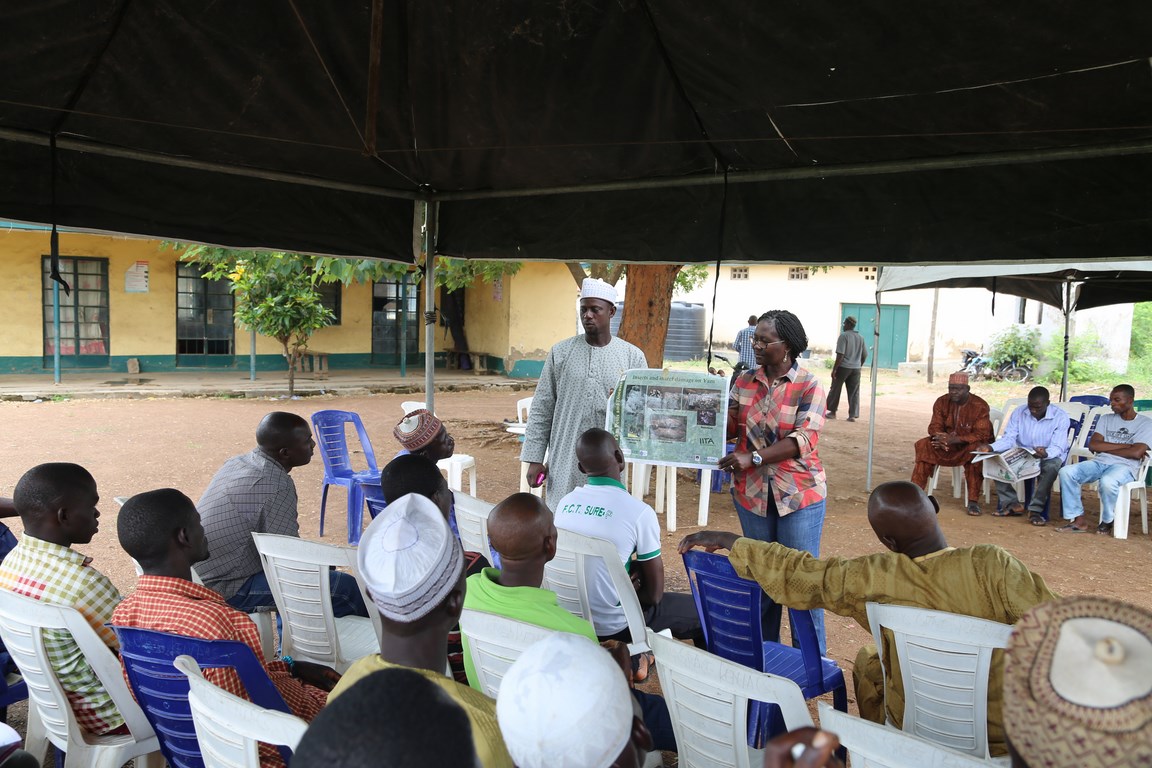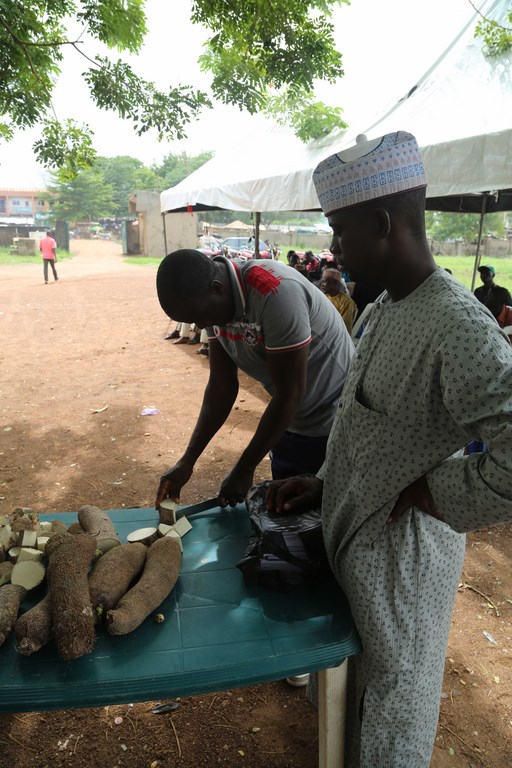Some yam farmers are calling the minisett technology “magic” after they saw its performance in the field. Farmer-representatives from 40 villages in the six local government areas (LGA) of the Federal Capital Territory (FCT) who attended a Training of Trainers (TOT) workshop on the production of quality seed yam using the minisett technology at Gwagwalada on 23 May, were captivated by the process of preparing the minisetts. They learned about the major pests and diseases affecting yam production and received practical training on the technique. Participants, however, laughed in disbelief when Dr Beatrice Aighewi, YIIFSWA’s Seed Systems Specialist, cut the mother tuber into small setts. They insisted that the minisetts would not grow. However, some lead farmers who had taken part in previous training activities confirmed the good performance of minisetts in the field. In fact, one of them asserted that the technique was “magic.” Yam farmers in the FCT are now beginning to accept the value and benefits of the minisett technology on seed yam production after the YIIFSWA project had given several training sessions. These were intended to solve the problems of lack of high quality seed tubers and the high prevalence of pests and diseases which had lead to low productivity.
Salisu Saraki, a yam farmer who attended the training, was grateful for the opportunity after losing a significant amount of his crop to anthracnose last year. He explained, “Three years ago I lost some of my crop to the disease. Last year the same disease returned and I faced the possibility of losing my entire yam crop. I thought then that it was witchcraft because the plants looked as if they had been burned. I sought the help of shamans (local priest or priestess who can use magic) to ward off the curse on my farm but to no avail. It cost me two goats and some money. In fact, the shamans argued with each other about the intervention they had made on my behalf. The problem got worse by the day and so I went to other yam farmers for help. They directed me to Dr Adamu Shuaibu of MSHR (Missionary Sisters of the Holy Rosary) who works in the YIIFSWA project. I told him of my plight. When he visited my field, a significant number of my yam plants were already dead. He said he knew what it was but wanted a second opinion. He returned with a lecturer from the University of Abuja who ascertained that the problem was anthracnose. They asked me to buy Z-force (a fungicide with active agent mancozeb 80% WP), mix it with water, and use it to spray my plants. I did that. The remaining plants survived and I was extremely grateful for the advice. “This year my community was chosen to host a demonstration field and I was invited to participate and learn how to produce clean seeds.” With a wide grin on his face he concluded, “The training was very informative. Now I know more about pests and diseases that may affect my yam crop and I can do something about them.” A lead farmer from Gwagwalada recounted how favorable varieties such as Pepa and Ame have almost disappeared because “The ground didn’t accept them (tubers did not germinate) any longer, so we have stopped planting them. Meccakusa (a variety valued for its size and poundability) is no longer productive and we were getting worried, but with this technology there is hope. I learned about the minisett technique last year so this year I planted minisetts on 1500 heaps for seed yam production.” Another lead farmer from Kuje stated, “Yam is a source of energy and strength for my people so we eat it every day to be able to farm well. With this ‘IITA magic’ we can produce more and better tubers.” The word is fast spreading about the benefits of the minisett technique from those communities that have attended YIIFSWA’s demonstrations. Now other communities are reaching out to YIIFSWA’s extension partner in Abuja, MSHR, to ask to be included in project activities. Dr Shuaibu said that the number of new communities had to be pared down to 40 villages this year but those that were chosen are spread out across the FCT to reach a large population of yam farmers. Each farmer received seed yam, fungicide, and pesticide for the demonstration plot. The trained farmers are expected to assist the extension agents assigned to their locality with community training on using minisett for seed yam production and the management of demonstration plots in their localities.



No Comments